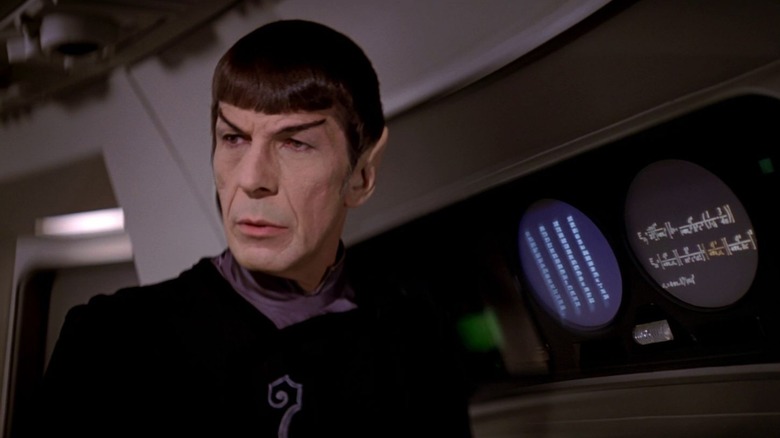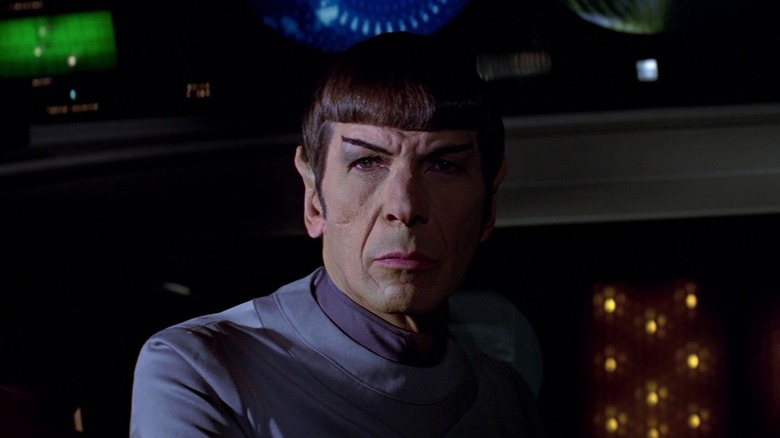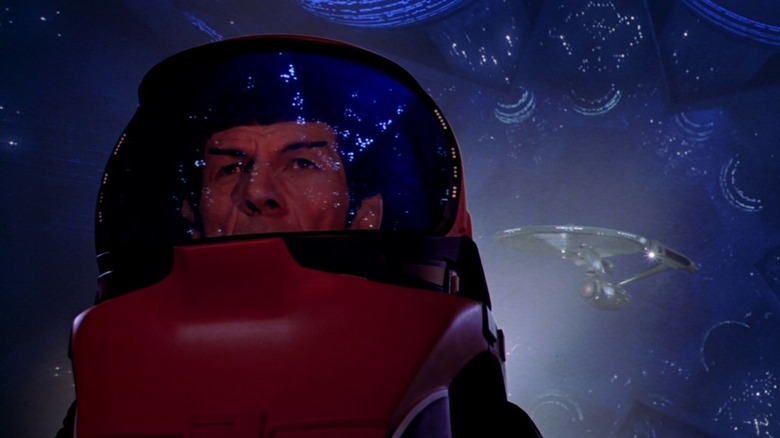Thanks to incessant reruns and the growth of the “Star Trek” convention industry, interest in Gene Roddenberry’s egalitarian TV space opera — which ran from 1966 to 1969 — was running high in the years after its cancellation. More and more fans were flocking to the once-moribund series, and Roddenberry himself went on speaking tours, deeply dissecting why audiences were drawn to it. By 1977, Roddenberry felt that his show had accrued enough cultural clout to warrant a reboot, and he put “Star Trek: Phase II” into production.
The idea for “Star Trek: Phase II” was to make a bigger, slicker version of the original series, but with a few new characters. The original cast, including William Shatner, James Doohan, Nichelle Nichols, George Takei, and Walter Koenig were all set to return, and they would be joined by a Vulcan named Xon (David Gautreaux), the helm officer Ilia (Persis Khambatta), and an executive officer named Decker (uncast at the time). As you probably noticed, Leonard Nimoy wasn’t listed. This was odd, as his character of Spock was the most recognizable character on “Star Trek.”
It turns out that in 1977, Nimoy was quite bitter about his time on “Star Trek.” According to the actor’s autobiography “I Am Spock,” Paramount was using his likeness to market its “Star Trek” reruns, and they had done so without his permission. He sued the company for restitution. Gene Roddenberry expressly didn’t take Nimoy’s side in the case, leaving the actor and the show creator on bad terms. When Roddenberry approached Nimoy about appearing in “Phase II,” he only offered the actor a gig on two of its 13 episodes. Nimoy turned down the offer.
According to a piece in The Hollywood Reporter, Nimoy once instructed his agent to hang up on anyone who mentioned “Star Trek.” The actor admitted to being rather angry.
His resentment, according to the same report, nearly caused Nimoy to bow out of 1979’s “Star Trek: The Motion Picture.”
The Roddenberry feud and a lawsuit nearly kept Nimoy from appearing in the first Trek movie
Note that when “Phase II” fell apart, most of its elements were repurposed into “Star Trek: The Motion Picture,” including characters and designs. The studio was impressed by the financial success of Steven Spielberg’s “Close Encounters of the Third Kind,” and large-scale sci-fi seemed to be commercially viable. “Phase II” wasn’t cohering, but the studio figured the time was right to turn “Star Trek” into a movie, a full decade after its cancelation.
Nimoy, however, was unimpressed with the pivot to film. He still didn’t like Roddenberry, and was still angry at the franchise for slapping his face on everything. Notably, Nimoy hated that Paramount had licensed Spock’s likeness in a 1977 Heineken advertisement wherein Spock’s famed pointed ears droop down until he consumes the product in question. Paramount refused to settle the case, feeling that Spock was their property. It wasn’t until Nimoy blankly refused to read the script for “Star Trek: The Motion Picture” that they began to budge on the matter.
The Hollywood Reporter recounted a story from the book “Keys to the Kingdom: The Rise of Michael Eisner and the Fall of Everybody Else,” by THR editor Kim Masters, wherein Nimoy was approached by Jeffrey Katzenberg, a bigwig at Paramount at the time. Katzenberg met with Nimoy while the actor was in a production of “Equus” in New York, and asked him to come back as Spock. Nimoy was happy that an exec had bothered to come see him, but outright refused to take part in “Star Trek,” as his suit was still pending. Katzenberg, knowing how valuable Nimoy was, hustled to get the actor a decent settlement.
Once that was taken care of, Nimoy finally agreed to start looking at scripts.
Why Nimoy changed his mind about being in Star Trek: The Motion Picture
Nimoy later recalled his reasoning for accepting, and it wasn’t just because of his case against Paramount. Yes, he was happy to have won the case, but he also began to realize that he would have to eventually explain to reporters and Trekkies why he wasn’t in “Star Trek: The Motion Picture.” He might have hated Roddenberry, and he reportedly hated a lot of Roddenberry’s movie ideas, but he also knew there was an unspoken obligation to the franchise. As THR points out, Nimoy was later quoted as saying:
“How could I answer those questions? […] I didn’t like the script? I hated Gene? I was angry at the studio? I would be carrying that negative s*** around with me for the next five years at least.”
Nimoy seems to have felt that the time for resentment had ended, and that this was an opportunity, not a burden.
Indeed, Nimoy would later use his continued participation in “Star Trek” as a leveraging tool against Michael Eisner, also in charge of Paramount at the time. When Nimoy wanted to make his directorial debut with “Star Trek III: The Search for Spock” in 1984, he reportedly said to Eisner:
“You and I are having a very important meeting. This might be the last time we ever speak to each other. We’re either going to start working together on something, or we’re literally down to the final moments of our relationship!”
Nimoy directed “Star Trek III” as well as “Star Trek IV: The Voyage Home,” the highest-grossing “Star Trek” movie. By 1987, Eisner had moved over to Disney, and the exec thought to hire Nimoy to direct the comedy film “Three Men and a Baby.” It was one of the biggest hits of the year.









